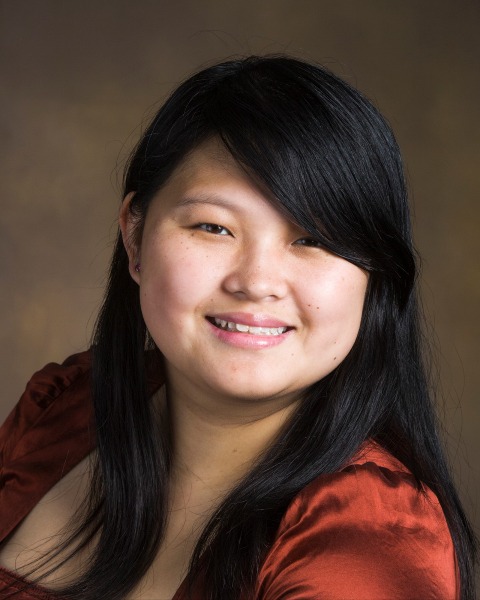Tissue Engineering
Optimizing Large Polyacrylamide Hydrogels for High-Yield Cell Culture
(K-412) Optimizing Large Polyacrylamide Hydrogels for High-Yield Cell Culture
- AM
Angileena Mathura
Undergraduate Student
City College of New York CUNY, New York, United States - MH
Marla Hilderbrand-Chae (she/her/hers)
PhD Student
University of Massachusetts Lowell, United States 
Yanfen Li, PhD (she/her/hers)
Assistant Professor
University of Massachusetts Lowell
Lowell, Massachusetts, United States
Presenting Author(s)
Last Author(s)
Primary Investigator(s)
Materials and Methods:: Large PA hydrogel was prepared between two glass surfaces of a 10 cm petri dish. The pre-gel solution was made using acrylamide, bis-acrylamide, and deionized water, with the addition of Tetramethylethylenediamine (TEMED) and Ammonium Persulfate (APS) catalysts. The petri dish lid with the opening side facing up was treated with 5% (3-Aminopropyl)triethoxysilane (APTES) and 5% Glutaraldehyde. The bottom half of the petri dish was treated with Rain-X. The polymerized hydrogel in the petri dish lid was covered with parafilm. Using a syringe, 55% Aqueous Hydrazine Hydrate (HH) was inserted through the parafilm onto the hydrogel, followed by Glacial Acetic Acid (AA) wash. A protein solution containing Fibronectin, Sodium Periodate, and Phosphate-buffered saline (PBS) was added to polydimethylsiloxane (PDMS) stamps for patterns to be printed on the polymerized hydrogel for cell culture.
Results, Conclusions, and Discussions::
To optimize the polymerization process, large PA hydrogel was prepared between two glass surfaces of a 10 cm petri dish. The pre-gel solution was pipetted into the petri dish lid, with the opening side facing up, and the bottom half of the petri dish was placed on top of the pre-gel solution with the opening side facing up. The desired gel stiffness was made using formulations of acrylamide, bis-acrylamide, and deionized water. The pre-gel solution contained the desired gel stiffness solution and the addition of TEMED and APS catalysts. The petri dish lid with the opening side facing up was treated with 5% APTES and 5% Glutaraldehyde to provide a hydrophilic region of strong adhesion between the hydrogel and the glass surface. The bottom half of the petri dish was treated with Rain-X, establishing a hydrophobic region that allowed for easy removal from the surface of the hydrogel after polymerization. The polymerized hydrogel in the petri dish lid was covered with parafilm, followed by HH and AA washes to functionalize the gels. The gels were stamped using protein-covered PDMS stamps.
The large-format PA hydrogels of 10 kPa and 40 kPa stiffnesses were produced using this optimized method. Under a light microscope, it was observed that the large-format hydrogel was able to support the adhesion and growth of cells. Faults in the stamping technique were attributed to cells not adhering to the specific stamped patterns. The observed results from using this protocol indicated that PA hydrogel production can be scalable and easily replicated. This optimized approach provides a less tedious and more cost-effective method to produce hydrogels than traditional methods. The hydrogels were able to support the adhesion and growth of cell cultures. The ability to culture large numbers of cells will enable the study of cell behavior in unprecedented detail. Specifically, this method could be used to study the effects of different mechanical stimuli on cell behavior, to develop new cell-based therapies for diseases such as cancer and heart disease, and to improve the efficiency of drug discovery.
Acknowledgements (Optional): : This work was conducted at UMass Lowell’s REU Site: Inclusion and Innovation in Medical Devices, funded by the National Science Foundation (Award# 2243722).
References (Optional): :
1. Caliari, Steven R, and Jason A Burdick. “A practical guide to hydrogels for cell culture.” Nature methods vol. 13,5 (2016): 405-14. doi:10.1038/nmeth.3839
2. Shi, Xuechen, and Paul A Janmey. “Large Polyacrylamide Hydrogels for Large-Batch Cell Culture and Mechanobiological Studies.” Macromolecular bioscience, e2300042. 2 May. 2023, doi:10.1002/mabi.202300042
